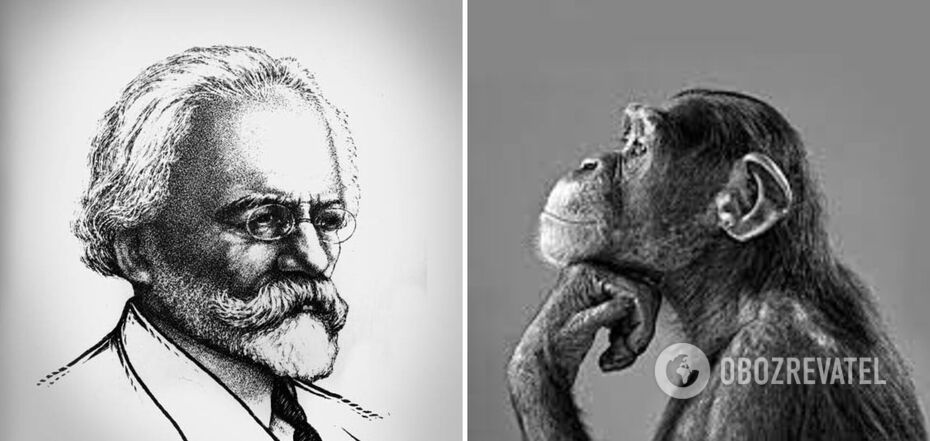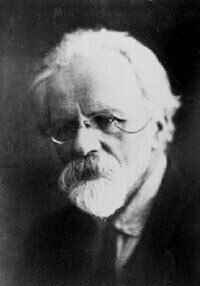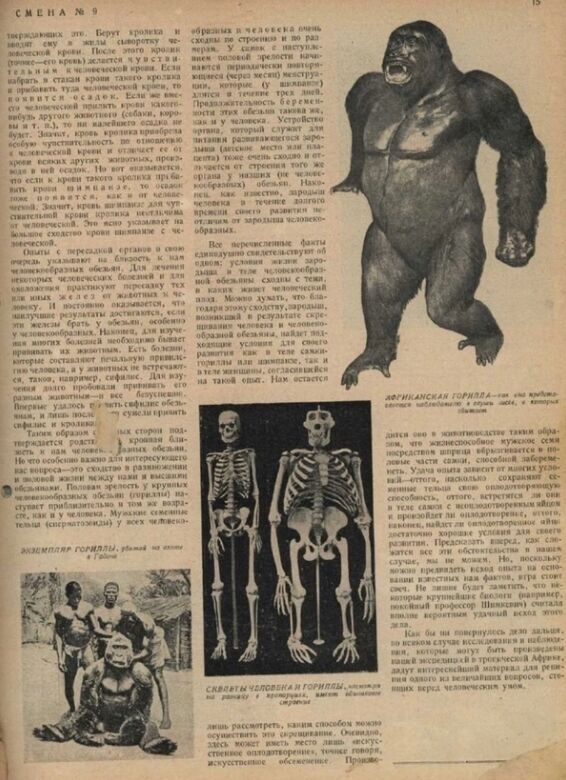News
98 years ago, a Soviet scientist tried to crossbreed a man and an ape: how the gruesome experiment ended
Almost 100 years ago, the Soviet Union allocated large amounts of money for risky experiments to breed a human-ape hybrid. They were conducted by biologist Illia Ivanov.
OBOZ.UA offers to find out how the scientist managed to convince the USSR authorities to give him money for a dubious experiment, and how it all ended.
Ivanov Illia Ivanovych was born on July 20 (August 1), 1870, in the city of Shchyhry, Kursk province of the Russian Empire. He graduated from Kharkiv University and studied biology in Paris. He became known for his successful work on artificial insemination of animals. He had been working in this field since 1899. Ivanov developed hybrids of mouse and rat, mouse and guinea pig, zebra and donkey, antelope and cow. Thanks to him, the USSR developed a breed of hardy horses that were very useful in agriculture.
Encouraged by his success, the biologist set his sights on more – he suggested that it was possible to create a human-ape hybrid using artificial insemination.
However, all his achievements did not convince the Soviet authorities to provide him with funds for a dubious experiment to create human hybrids. Then Ivanov used other mechanisms and found an approach to the authorities that allowed him to "sell" the idea.
The Soviet government was obsessed not only with communism but also with hatred of the Church and religion. And Illia Ivanov skillfully took advantage of this. He stated that the successful conduct of his experiment would be the final victory of atheistic humanism over religion. This would allow the USSR to create hybrids and control their evolution, and in fact, put the Soviet government on a par with God. And the Soviets took the bait.
In the fall of 1925, the USSR Academy of Sciences allocated Ilya Ivanov the equivalent of 10 thousand dollars and permitted him to travel to Africa, where he planned to create hybrids. In February of the following year, the biologist went on a business trip to French Guinea, specifically to Kindia.
Ivanov had a simple plan: when he arrived in Kindia, he hoped to take a few monkeys and pay local women to give birth to children from the animals.
However, the reality turned out to be a bit more complicated. As it turned out, local folklore had a belief that monkeys kidnapped and raped women, and if they returned, they were banished. Therefore, no woman agreed to the scientist's experiment for any money.
But the spirit of Ostap Bender still lived in Ivanov's soul, and he took a different path: he anonymously received sperm from the men on his team and fertilized female chimpanzees with it. In doing so, he got himself into a lot of trouble, as chimpanzees are hard to find, hard to catch, and even harder to keep.
However, he was still lucky enough to artificially inseminate 13 female chimps. However not a single viable pregnancy was achieved.
Ivanov was on the verge of despair, realizing that he would need to report on something to his "sponsors" who dreamed of how to "overthrow" God. So he resorted to another scam – impregnating women with chimpanzee sperm under the guise of gynecological examinations. But the French authorities exposed him and sent Ivanov home.
However, he did not stop. Ivanov sent 20 male chimpanzees to Russia, of which only four survived the journey. At home, he appealed to "all Soviet women" to serve science. And here he was lucky once again. He found such a willing woman, though in a single copy. She went down in history as "volunteer G". The woman herself wrote a letter to the scientist, saying that her personal life was ruined and she saw no point in continuing to exist. Therefore, she asked not to refuse her and to accept her for the experiment.
This experiment was conducted. However, it also ended, like the previous ones, in nothing.
Subsequently, Ivanov was politically criticized. During the purge of scientists in 1930, the biologist was arrested and exiled to Kazakhstan, where he died of a cerebral hemorrhage 2 years later.
As reported by OBOZ.UA:
The Spanish startup Overture Life has created a sperm injector robot that has successfully fertilized a human egg. As a result of the experiment, two healthy babies were born.
For the first time in history, British scientists have managed to create synthetic human embryos from stem cells without the participation of sperm or eggs. This achievement puts humanity on the brink of moral debate over the creation of synthetic children, but scientists hope it will also help to better understand the critical early stages of human development.
Only verified information is available on the OBOZ.UA Telegram channel and Viber. Do not fall for fakes!





























